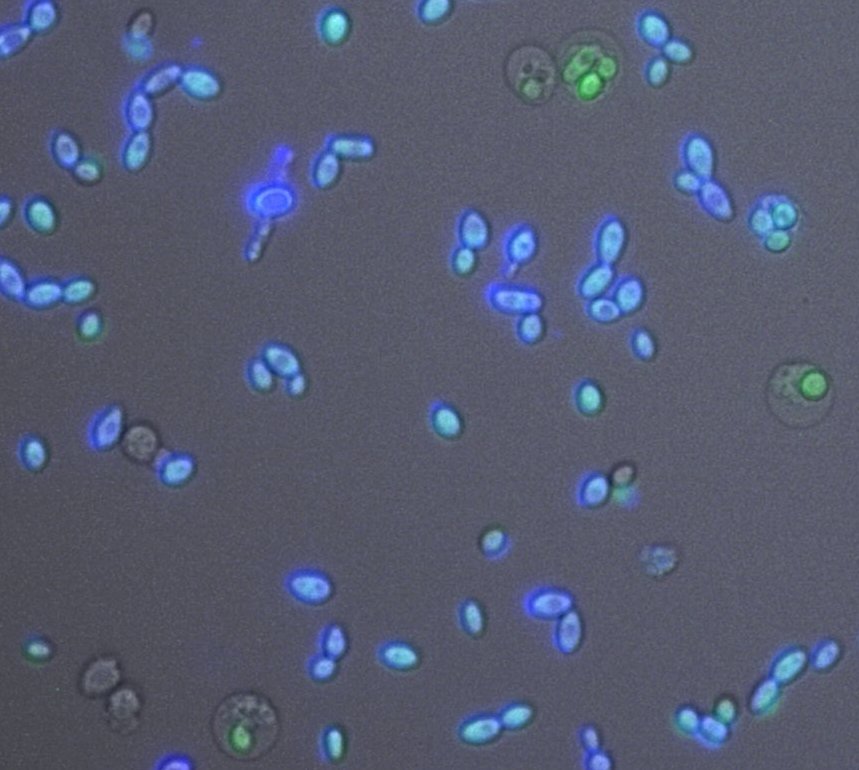Genetic AnalysiS and EXPERIMENTAL EVOLUTION
The first step in biofilm formation is adherence to a surface. We are investigating the genetic basis of plastic adherence in natural isolates, as well as through de novo evolution. Inspired by research conducted in bacteria, we are using growth in the presence of plastic beads to select for the ability to adhere to plastic. We will then comparing the genetic basis of the newly evolved ability to that existing in strains isolated from the environment.
Plastic bead
Yeast are grown while attaching to plastic beads (sample bead shown on the left). Photo above shows the surface of a bead with red glowing cells attached.
We have evolved populations of yeast from multiple different genetic backgrounds for over 600 generations and are now uncovering the mutations responsible for the increase in adherence ability. These yeast also increased in their ability to form biofilms and other adherence traits.
Green fluorescent yeast were stained with blue. Only those eaten by amoeba remained green.
Our experimental yeast have also incidentally evolved to become more virulent. This has led us to investigate other selective pressures that can unintentionally favor virulence, including predation by amoeba. We are co-evolving the two organisms to understand this relationship.
current FUNDING
NIH R15: The evolution and genetics of fungal virulence (2023-26)
Previous FUNDING
NIH R15: The evolution and genetics of a complex fungal virulence trait (2017-20)


